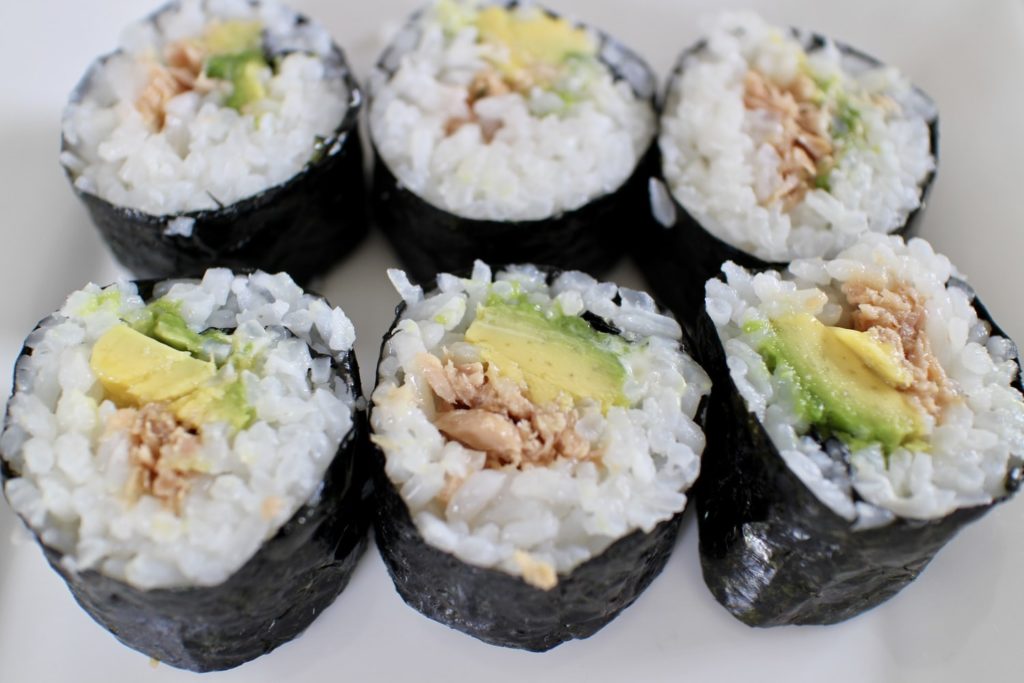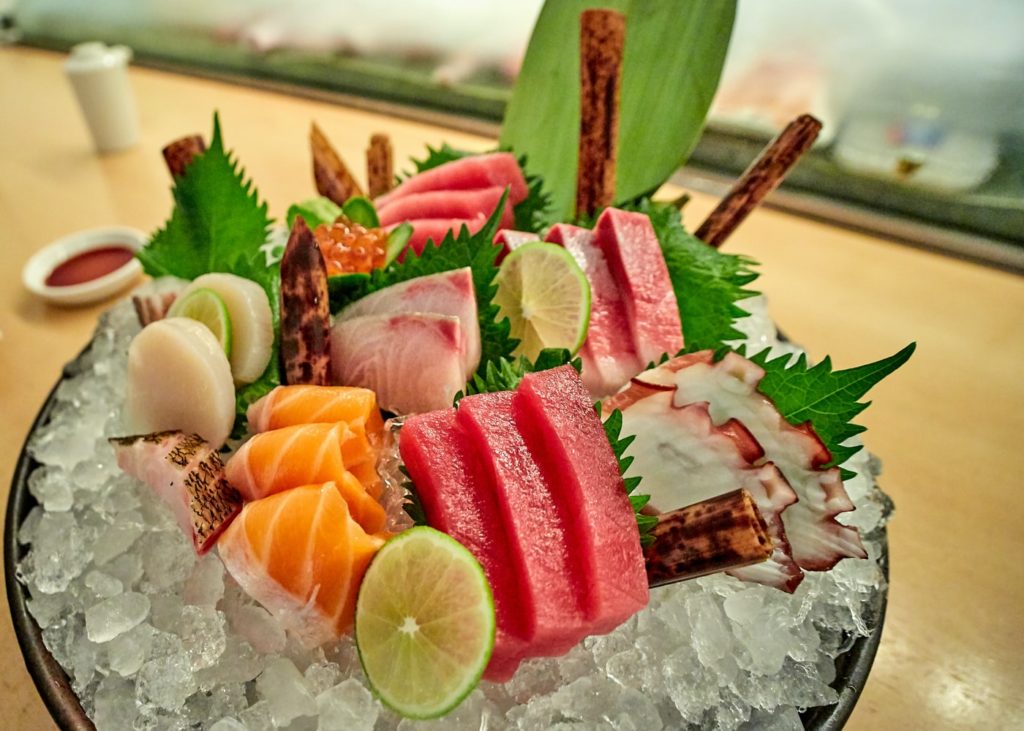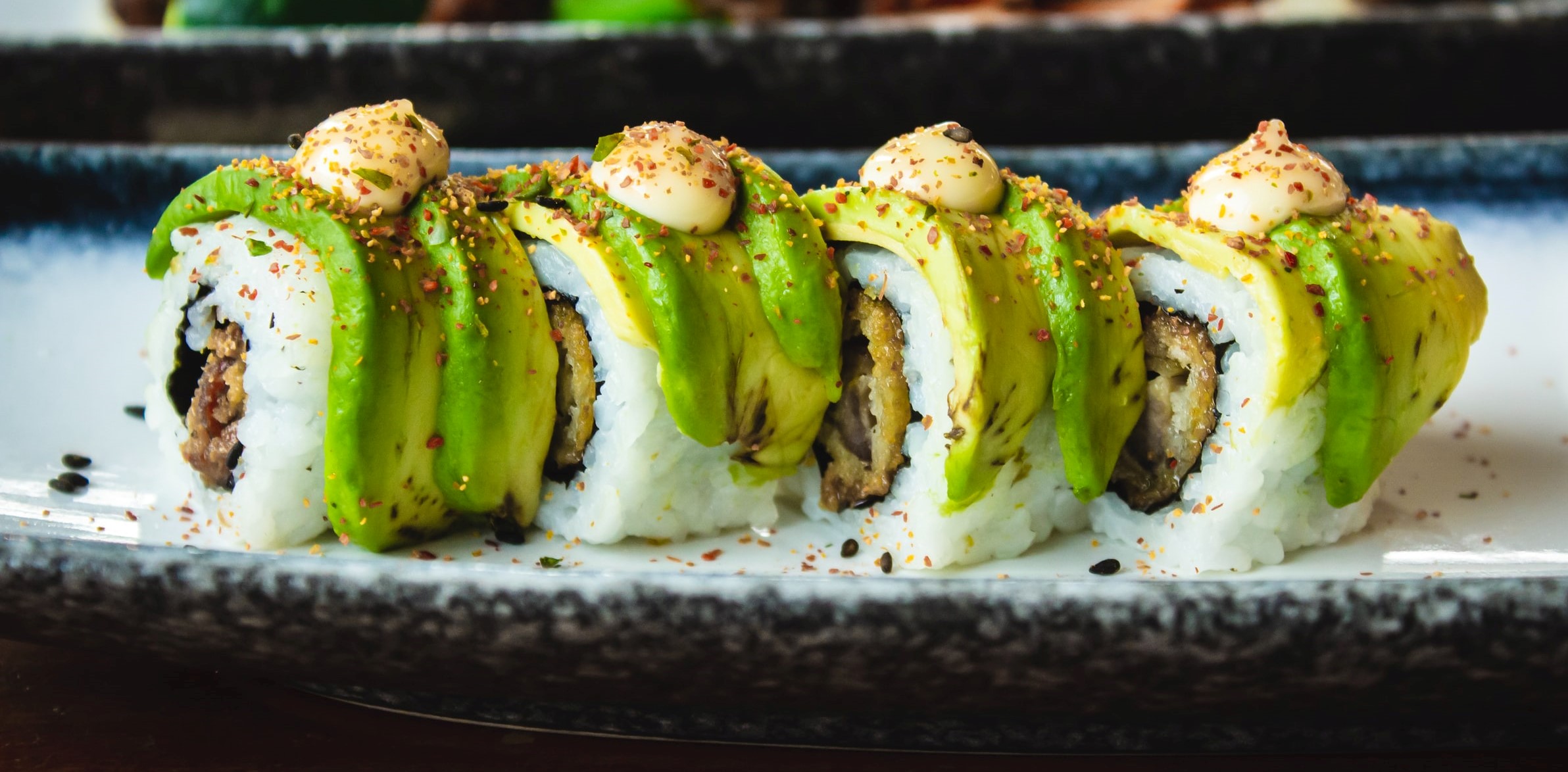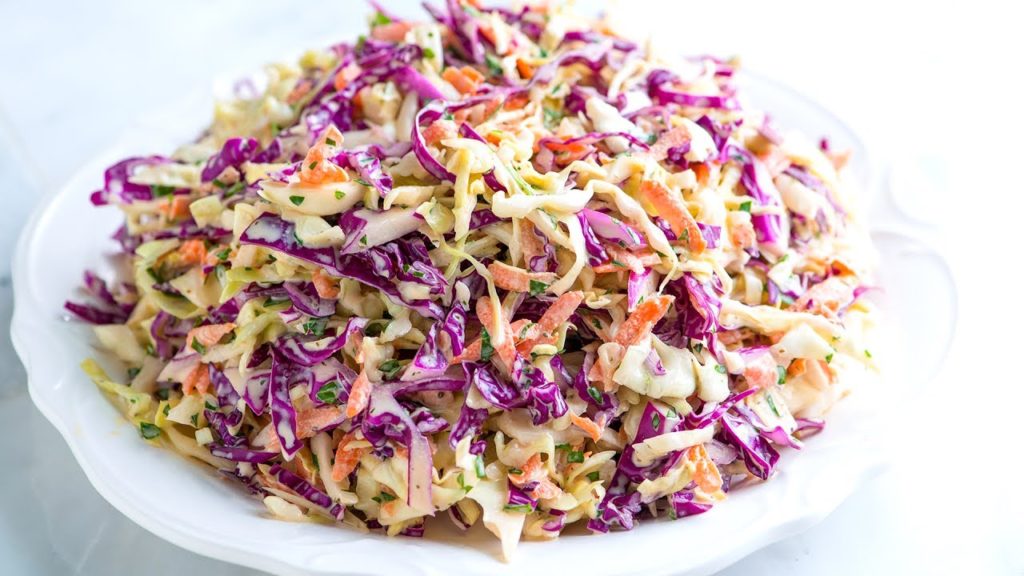
This extremely popular dish associated with Japan, in fact, comes from China. Sushi was first mentioned in the 6th century in China, where gutted, salted fish were mentioned and put in barrels with boiled rice for preservation. Over the centuries, this has evolved towards not throwing rice away but eating it with the fish. It was invented to add rice vinegar to the rice, which further shortened the fermentation period. Sushi has been around for about 200 years in the form closest to the present.
**Interesting Facts about Sushi**
- In principle, sushi should be served immediately after preparation.
- Traditionally, sushi is eaten with fingers or chopsticks.
- Chopsticks are the most popular cutlery in the world, used by over two billion people.
- They are two poles usually made of wood, polished, sometimes covered and decorated, used mainly in the Far East.
- Sushi is served with dipping soy sauce, wasabi, and pickled ginger.
- Soy sauce is one of the most important spices in Asian cuisine, now also used in Western cuisines.
- It is a fermented sauce, made from a mixture of soybeans, wheat, water, and salt. To these ingredients, a mold called Aspergillus oryzae or Aspergillus sojae is added, yeast, lactic acid bacteria, a mash is formed, which is matured, then squeezed and filtered. It is particularly important that not a single grain of rice gets into the sauce when dipping sushi.

- Wasabi is a spice in the form of a green paste, the addition of which makes sushi more aromatic and expressive.
- Wasabi, or Japanese horseradish, is a plant from the cabbage family. Isothiocyanates, mainly sangirin, are responsible for the spicy taste of wasabi. Wasabi is served as a separate seasoning, but also as part of sushi. On one side, a piece of fish is smeared with wasabi before being wrapped in nori or covered with rice.
- Real wasabi is obtained from the root of the Eutrema japonica plant and is expensive. So, it is highly likely that the green paste they serve you in sushi restaurants is a mixture of horseradish, mustard, and green food coloring
- Pickled ginger is eaten between the different types of sushi to cleanse the taste buds.
- For this reason, it is also not recommended to drink water and prefer green tea.
- According to Japanese custom, in restaurants, sushi is served in sets that have different names: matsu (pine) – an exquisite set, expensive, take (bamboo) – an intermediate set, ume (Japanese apricot) – a cheap set.
- Some restaurants prefer a self-service form of serving sushi with a moving belt that runs around the bar.
- The staff on the belt sets plates of different colors with different types of sushi and the consumers themselves choose the one they want. Each color of the plate means a different price for sushi.
- Simplicity and minimalism function in traditional Japanese cuisine, while traditional sushi consists of only two ingredients.
- It is a dish of the type of namasumono, i.e. served raw. Most often it consists of sashimi – raw fish or seafood, and shari – specially prepared, acidified rice.
- Sushi can also contain nori – pressed seaweed.
- There are several basic types of sushi: nigiri, maki, uramaki, gunkan maki, oshi, temaki, inari, chirashi-zushi.
- Nigiri is the oldest and most popular type of sushi.
- It is a squeezed, kneaded, finger-shaped portion of rice, covered with a layer of wasabi, on which a piece of fish, seafood or other topping is placed. There are many varieties of nigiri but the most popular are raw or smoked fish.
- Maki – the most popular variety of sushi in Europe and the United States. In Japan, nigiri and gunkan are in the first place.
- Maki is prepared by wrapping the rice and additives in sheets of nori algae. A roll is formed with the help of a special bamboo mat, which is then cut into smaller pieces. There are many varieties of poppy seeds, depending on the amount and type of filling. The most popular are hosomaki and futomaki.
- Uramaki are “inverted” poppies.

- In this type of sushi, the ingredients are wrapped in nori and then rolled in rice. Additionally, they can be sprinkled with sesame seeds. Classic uramaki is additionally wrapped with various fish.
- It is assumed that sakana, i.e. raw fish, which is the most popular addition to sushi, is the essence of this dish. Well, following the nomenclature: su – means vinegar, and shi – (short for “meshi”) rice, it turns out that perfectly prepared rice is the most important in sushi.
- Warning! Pink ginger does not exist. Ginger has only one color – white. The blush is the product’s marinating effect. Nor is it an addition to sushi in the traditional sense. It is eaten between bites to clear the taste buds until the last breath.
- The Japanese believe that all ingredients should be served in a state that is close to their natural state, because they will feel the real taste of the product. That is why ikizukuri is immensely popular in Japanese sushi bars, which is part of the art of serving sushi, which is sashimi. In this case, the fish served on the plate is still alive and serves as a decoration of the dish.
- Harmony and order must also be maintained when eating sushi. That is why sushi is served with specific dynamics. To avoid disharmony, the portions served to men and women must not differ too much. Moreover, the size of each serving is personalized so that everyone can keep up the pace.
- The best sushi restaurant is one of the smallest in the world. It is located next to the Tokyo Metro and can seat no more than 9 people. It is run by 92-year-old Jiro Ono, who has earned three Michelin stars. He is an enthusiast who even dreams of great sushi in his sleep.
- In Europe, especially in places where the rules derived from the Land of the Rising Sun are adhered to, sushi is eaten with your fingers. In Japan, this custom is more popular than eating with chopsticks.
- The sushi is prepared in such a way that each portion is the perfect size. Thanks to this, you can eat it in one go. If the batch turns out to be too large, there is one important rule – hold the slice in the air with chopsticks or fingers, but never put it back on the plate!

- Another important rule for the Japanese is to measure the amount of soy sauce accurately so that there is nothing left in the sauceboat. Otherwise it will be treated as disrespect. For the Japanese, this issue is extremely important!
- Eating this fish – we are talking about fugu – is like playing Russian roulette. Because in its insides there is a poisonous substance that can kill. It is only found in Japan, and only sushi masters who have completed a special course can prepare it. It has delicious meat that some say is worth the risk. The death of the predecessors does not discourage the next daredevils.
- There are competitions in the world where the longest sushi roll is prepared. It will not surprise anyone that the Japanese set the record. However, for five years it was the Russians who could boast the longest sushi roll – it was 2.5 km long.
- Sushi is a great source of omega-3 fatty acids.
- Bluefin Tuna Sushi is the costliest Sushi in the world.
- The knives used to prepare Sushi are sharpened every day.
- In Japan, a sushi chef can only work in a restaurant after ten years of training.
- The most expensive sushi is being served by Filipino chef Angelito Araneta Jr at a restaurant in Manila.
- Almost 80% of the world’s bluefin tuna caught is used for sushi
- The highest price ever paid for a sushi grade bluefin tuna was $396,000 on January 4th, 2011 in Tokyo.
- Before cooking, the sushi rice should be at body temperature.
- The first International Sushi Day was celebrated on 18 June 2009.
- Women were not permitted to be sushi chefs, as it was supposed that their warmer hands would taint the taste and quality of the fish.
- While preparing nigiri sushi, the perfect weight for the shari should be around 20-25g.

- Only the fish side of nigiri sushi should be dipped in soy sauce, not the rice.
- Wasabi is added to sushi to soften any fishy odors and draw out the flavor of fish.
- Sushi can also be served in a bento, a box with small compartments that hold the various dishes of the meal.
- Sashimi or other types of sushi containing raw fish present a risk of infection.
- About 99.99% of all sushi rice that is served in the United States was grown in the United States.
- The word “sushi” refers to cooked rice with vinegar, salt, and sugar filled with other ingredients like seafood and vegetables.
- Frozen fish is often “fresher” than fresh fish in today’s sushi.
- When closely arranged on a tray, different pieces are often separated by green strips called “baran” or “kiri-zasa”.
- It is a tradition to eat whole nigiri on the first try.
- Sushi is mostly low in fat and high in protein.
- Makizushi is high in carbohydrates.
- In Japan, green tea is invariably served together with sushi.
- The mixing of wasabi and soy sauce has become common in the west, but in Japan, it is rarely seen.
- Nori is rich in vitamins A, B-6 and C and is extremely low in calories.
- Avacado, cucumber, and carrots are the most popular veggies used in Sushi.

- Sushi is estimated to have started as early as 500 B.C.
- There are six different cuts of tuna used in sushi rolls. They are se-kami, se-naka, se-shimo, hara-kami oh-toro, hara-naka chu-toro, and hara-shimo.
- Sushi can enhance the immunity system.
- Sushi helps to raise the production of red blood cells.
- Futomaki is a more popular variation of sushi within the United States and comes in variations that take their names from their place of origin.
- Sushi rice is also called shari or sumeshi.
- After Japan, New York is second in the world for the best sushi,
- The world’s largest sushi roll is served in Umewaka Restaurant in Anjo City.
- Oshizushi also known as hako-zushi, is a pressed sushi from the Kansai region, a favorite and specialty of Osaka.
- Gunkan maki are small rolls made of nori flakes, in which rice is placed at the bottom and the rest is filled with filling. Most often, the gunkan is filled with caviar, chopped salmon or tuna sashimi, or fermented natto beans.
- Oshi or “pressed” sushi. They are prepared in a special wooden box in which subsequent layers of rice and fish are strictly arranged. This method most closely relates to the oldest method of fermenting fish.
- Inari are stuffed sushi.
- They have the shape of pockets made of fried tofu aburaage cheese, usually filled with rice with pieces of chicken, shitake mushrooms and seasoned with ginger and sesame.
- Chirashi-zushi is sushi “in disarray”, popular in Japanese homes.
- It is a bowl of rice on which various ingredients of fish, seafood and vegetables are arranged.

- Sushi should be eaten at once, without cutting or separating ingredients.
- The Japanese are happy to wash down sushi with beer or choya plum wine.
- After eating sushi, the Japanese order miso soup, or a fruit dessert.
- The original way to get nori, or the dried seaweed used to wrap sushi rolls, was to scrape it off fishing boats and then dry it in the sun. Currently, these algae come from specialized breeding.
- Nigiri, which is a thin slice of fish on a beaten piece of rice, should be eaten upside down, so that the fish is on the tongue. Only in this way can a full taste experience be guaranteed.

- Due to the health properties of its ingredients, sushi (next to miso soup) is the secret of Japanese longevity – on average they live up to 84 years.
- When buying take-out sushi, do not refrigerate it – rice loses all its best properties in it.



